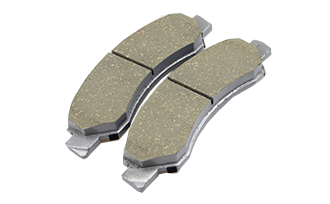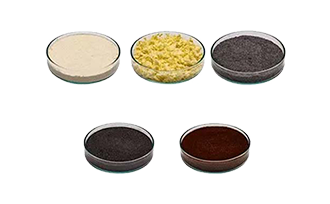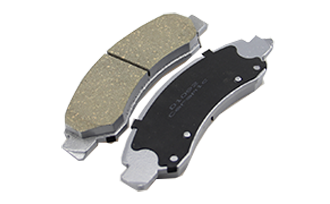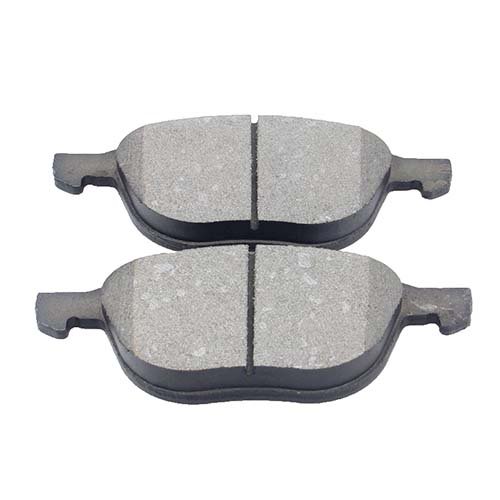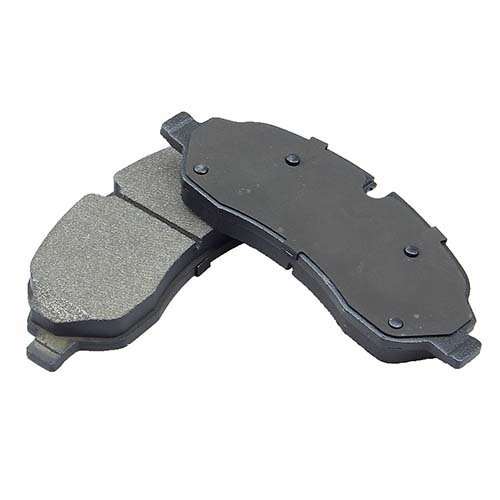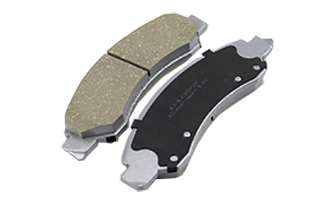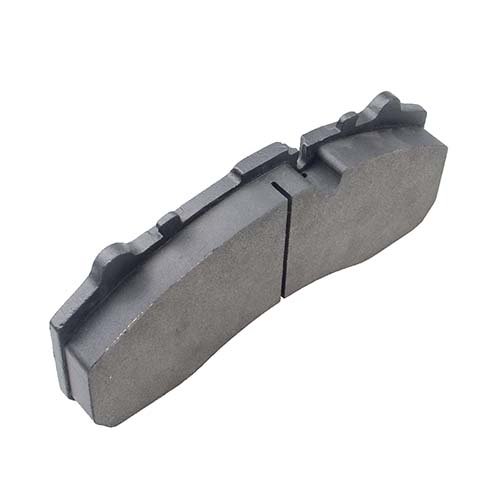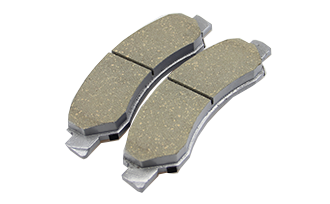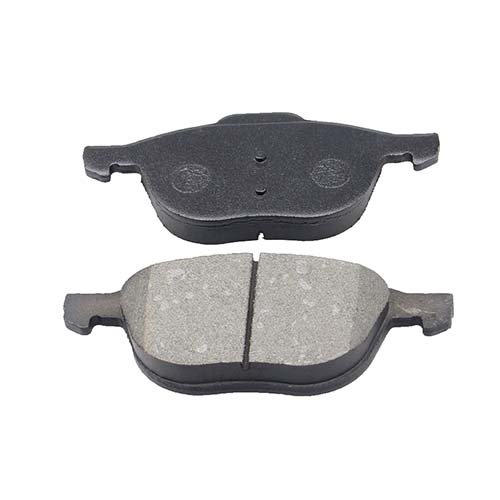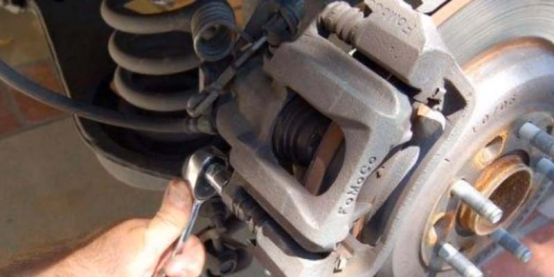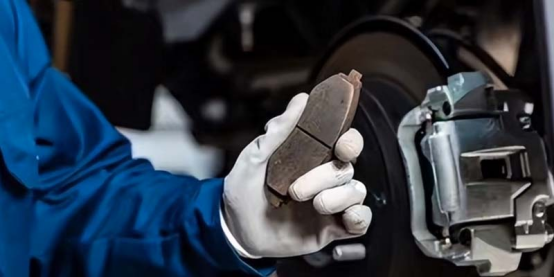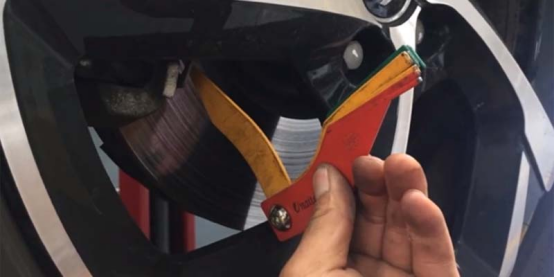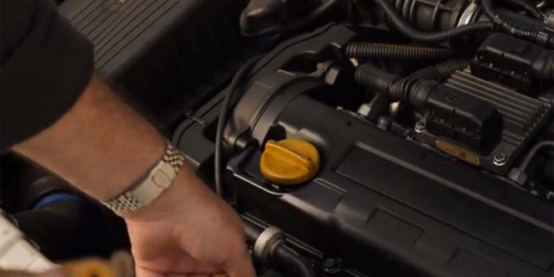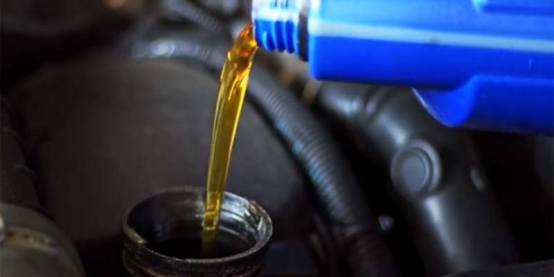-
Posts
12 -
Joined
-
Last visited
About garryhe
- Birthday 07/31/1972
Personal Information
-
Auto Parts Experience
Expert Knowledge
-
Working in the Auto Parts Industry
Yes
-
ASE Certification
Yes
Recent Profile Visitors
The recent visitors block is disabled and is not being shown to other users.
garryhe's Achievements
-
garryhe started following Artificial Intelligence in the Automotive Aftermarket
-
garryhe started following Toyota Corolla Front & Rear Brake Pads
-
Ketulla offer you toyota oem brake pads, including toyota corolla, toyota camry, toyota Hilux, Toyota acoma, Toyota avalon, Toyota highlander,Toyota Rav4, Toyota tundra or other toyota cars, you will find your right pads, whatever you are doing wholesale or retail business, we can custom with you with ceramic or semi metallic formula, contact us to improve your business now! https://ketullabrakes.com/product-category/for-japanese-cars/for-toyota-cars/toyota-corolla-brake-pads/ to explore more toyota corolla brake pads;
-
- toyotabrakepads
- toyotacorollabrakepads
-
(and 2 more)
Tagged with:
-
Ketulla’ mission is to provide a safer way for any driver to improve your braking performance. Our KE22 advanced ceramic brake pads feature a no dust,copper free, with carbon fiber to provide extreme braking power, while reducing brake dust and noise. Additionally, the brake pads come with a high-quality stainless steel backing plate and advanced hardwares making it easy to complete brake replacements. Using KE22 ceramic disc brake pads ensures driving safety, no matter where you are or how you use your vehicles. Duralast Benefits Ceramic Brake Pads Extremely quiet Ultra-low dust Copper free in according with international standards Improved stopping power Gentle on rotors friendly stable friction output All Ketulla Performance compounds are not compatible with carbon ceramic rotors. Ketulla ceramic pads are designed to work with Iron/Metal rotors. 100-650 FF operating temperatures 100-450 FF optimal temperature range https://ketullabrakes.com/products/ceramic-brake-pads/ to explore more details or ask for inqur friction materials.psd
-
We manufacture genuine oem brake pads for various models, such as Corolla, Camry, Highlander, and more. You can provide us with the OE numbers according to your requirements. If you have your own brand, you can use your packaging. If not, we can offer free design services to enhance your brand impact. In addition to Toyota brakes models, we have a total of 2351 brake pad models covering Japanese, Korean, American, European, and Chinese-made vehicles. We also offer both semi-metallic and ceramic brake pads, as well as GG-grade performance brake pads compliant with international standards. Contact us for pricing details and more information. check here to explore more toyota cars https://ketullabrakes.com/service/brake-pads-for-vehicles/for-japanese-cars/for-toyota/
- 2 replies
-
- brakepads
- toyotabrakepads
-
(and 2 more)
Tagged with:
-
Very good information, i also share some tips on this subjects: 1. How Long Do Toyota Brake Pads Last? 2. CERAMIC VS. METALLIC BRAKE PADS: WHICH IS RIGHT FOR YOU? 3. Should I Replace Front And Rear Brakes At The Same Time? We are appreciated if you let us know your suggestion and ideas,
-
garryhe started following How do i know if my brake pads are worn out?
-
Brake pads are a critical component of your vehicle’s braking system, and it’s important to know when they need to be replaced. Worn brake pads can compromise your safety on the road, as they can lead to reduced stopping power and longer braking distances. In this post, we’ll discuss how to know if your brake pads are worn out and need to be replaced. 1. Squealing Noise 2. The Thickness Of Friction Materials Explore details from here: How Do I Know If My Brake Pads Are Worn Out.psd
-
- brakepads
- keutallabrakes
-
(and 1 more)
Tagged with:
-
garryhe started following What are the different types of brake pads? , The Best Front And Rear Brake Pads For Cars, Trucks & Suvs , Looking for OEM Brake pads? and 1 other
-
Products Overview Whether it’s semi metallic brake pads or ceramic brake pads, KETULLA’S expertise and innovation are completely reliable – we have been for over 23 years. We are one of brake system suppliers and major in manufacturing brake pads for cars in a variety of different cars models, we cover 2351 different types brake pads models– rear brake pads, front brake pads for cars, trucks & Suvs, is your strong and reliable partner supplier. Your Benefits In the braking system industry in China our products have obtained a lot of certificates based on its excellent quality. And visually, our brake pad production formula and layer process and quotation are also at the forefront of development in China. Ketullabrakes brake pads have obtained R90, AMECA, IATF16949 certificates; Up to now, our excellent brake performance has enabled us to obtain cooperation from 13200+ brands around the world, such as low-dust Ketullabrakes ceramic brake pads, which are very popular in the South American market, demonstrating our product quality control ability. Maximizes our braking power at high speeds and in emergency situations.
-
- ketullabrakes
- frontbrakepads
-
(and 1 more)
Tagged with:
-
Looking for High-quality OEM brake pads at budget-friendly prices? Look no further! We offer a wide selection of brake pads models (2351 different models)with ceramic brake pads, semi metallic brake pads, With our professional service, you can trust that you're getting the best value for your money. Cover 98% all most of cars models: Japanese Cars: toyota, Nissan, Honda......Read more Euro cars Korean Cars Chinese cars Ev & Hybrid Item specifics Custom ceramic brake pads , semi metallic brake pads according to your requirements Offer Free samples: we guarantee the quality of the samples is the same with your orders, Offer your box design Read more ......
-
- ketullabrakes
- brakes
-
(and 3 more)
Tagged with:
-
The replacement of brake pads is an important part of car maintenance, as the condition of the brake pads directly affects braking performance and safety during travel. When it is necessary to replace worn brake pads, it is generally recommended to replace the brake pads on both the front and rear wheels together. Actually, in most cases, it is not necessary to replace the brake pads on both the front and rear wheels together. The wear and lifespan of the front and rear brake pads are usually different. Under normal circumstances, the front brake pads experience greater braking force, resulting in higher wear and shorter lifespan. They typically need to be replaced around 30,000 to 50,000 kilometers. On the other hand, the rear brake pads endure relatively less braking force, meaning they last longer. Generally, they need to be replaced around 60,000 to 100,000 kilometers. When replacing brake pads, it is important to replace them together so that the braking force on both sides is balanced. If both the front and rear brake pads have a certain degree of wear, it is also possible to replace all four of them together. When should brake pads be replaced, and how can you perform a self-check on them? Here are the methods: Check the thickness: A new brake pad typically has a thickness of around 1.5 cm. As they wear over time, the thickness of the brake pad gradually decreases. Professionals recommend that when visually observing that the brake pad thickness is only about 1/3 (approximately 0.5 cm) of its original thickness, it is advisable to increase the frequency of self-checks and be prepared for replacement. Each brake pad has a raised indicator on both sides, with a thickness of around 2-3 mm. This indicator represents the minimum thickness for brake disc replacement. If the brake pad thickness is level with this indicator, it must be replaced. suggestions: It is indeed important to consider individual driving habits and environmental factors when determining the replacement interval for brake pads. While a general guideline is around 60,000 kilometers, it is advisable to have them inspected by a professional technician during regular vehicle maintenance when visually observing that the brake pads are thinning. This is because visual inspection can sometimes lead to errors, and a thorough examination by a qualified mechanic is more accurate and precise. Listen for noises: If you hear a "squealing" sound when lightly applying the brakes, it could be an indication of the initial interaction between the brake pads and the brake rotor upon installation. In such cases, it is recommended to replace the brake pads immediately because they have already reached the limit where the indicator on both sides of the brake pad is directly rubbing against the brake rotor. When encountering this situation, it is important to inspect the brake rotor while replacing the brake pads. The occurrence of this sound often suggests that the brake rotor has been damaged. Even after replacing the brake pads, the noise may persist. In severe cases, it may be necessary to replace the brake rotor. Additionally, the quality of the brake pads can also contribute to the occurrence of such noises. Therefore, once unusual noises occur during braking, if it is not caused by the brake pads, it is possible that excessive wear of the brake pads has led to direct contact between the brake pad indicator and the brake rotor, resulting in damage to the brake rotor. The cost of replacing a brake rotor is higher than that of brake pads. Therefore, it is advisable for vehicle owners to develop a habit of regularly observing and promptly replacing brake pads when necessary. This will help prevent potential damage to the brake rotors and ensure optimal braking performance. If you feel a lack of braking power when applying the brakes, it is possible that the brake pads have significantly lost their friction. In such cases, it is crucial to replace the brake pads to avoid potential serious braking accidents. Therefore, it is important to develop a good habit of self-checking. Additionally, decreased braking performance can lead to increased consumption of brake fluid. Therefore, when replacing brake pads, it is necessary to check the condition of the brake fluid as well. and you should change good quality ceramic brake pads or semi metallic brake pads. Find more details: chech our articles: https://ketullabrakes.com/support-news/
-
- ketullabrakes
- brake pads
- (and 7 more)
-
There are several different types of brake pads available, each with its own characteristics and advantages. Here are the most common types: Organic Brake Pads: Organic brake pads, also known as non-asbestos organic (NAO) pads, are made from a mixture of organic materials, such as rubber, fiberglass, carbon, and Kevlar. They are generally affordable and provide smooth and quiet braking performance. Organic pads generate less dust compared to other types, which helps keep the wheels cleaner. However, they tend to wear faster and may not be as effective under heavy or high-temperature braking conditions. Semi-Metallic Brake Pads: Semi-metallic brake pads are made by combining organic materials with metal fibers or particles, such as steel, copper, or iron. The metal content improves the pad's heat dissipation and overall braking performance, making them well-suited for high-performance applications. Semi-metallic pads provide strong stopping power and durability, making them suitable for heavy-duty use. However, they may produce more noise and generate more brake dust compared to organic pads. Ceramic Brake Pads: Ceramic brake pads are composed of ceramic fibers, bonding agents, and filler materials, often with embedded copper fibers. They are known for their excellent braking performance, smooth operation, and reduced noise levels. Ceramic pads offer good heat resistance, which helps minimize brake fade and maintain consistent performance even under demanding conditions. They also produce less brake dust and are generally gentler on the brake rotors. However, ceramic pads tend to be more expensive than organic or semi-metallic pads. Low-Metallic Brake Pads: Low-metallic brake pads contain a higher percentage of metal content compared to organic pads, usually consisting of iron, copper, or steel. They offer improved braking performance and heat dissipation compared to organic pads, making them suitable for moderate to heavy-duty applications. Low-metallic pads can generate more noise and produce more brake dust compared to ceramic pads, but they are often more affordable. Non-Asbestos Brake Pads: Non-asbestos brake pads are designed to be environmentally friendly and free of harmful asbestos fibers. They are typically made from a combination of organic materials, fillers, and bonding agents. Non-asbestos pads can provide reliable braking performance and are often used as a budget-friendly option. However, their characteristics can vary depending on the specific materials used. It's important to note that the choice of brake pad type should consider your driving style, vehicle requirements, and personal preferences. It's best to consult your vehicle's manufacturer or a trusted mechanic to determine the most suitable brake pad type for your specific application.
-
- ketullabrakes
- brakes
-
(and 3 more)
Tagged with:
-
The replacement of brake pads is an important part of car maintenance, as the condition of the brake pads directly affects braking performance and safety during travel. When it is necessary to replace worn brake pads, it is generally recommended to replace the brake pads on both the front and rear wheels together. Actually, in most cases, it is not necessary to replace the brake pads on both the front and rear wheels together. The wear and lifespan of the front and rear brake pads are usually different. Under normal circumstances, the front brake pads experience greater braking force, resulting in higher wear and shorter lifespan. They typically need to be replaced around 30,000 to 50,000 kilometers. On the other hand, the rear brake pads endure relatively less braking force, meaning they last longer. Generally, they need to be replaced around 60,000 to 100,000 kilometers. When replacing brake pads, it is important to replace them together so that the braking force on both sides is balanced. If both the front and rear brake pads have a certain degree of wear, it is also possible to replace all four of them together. When should brake pads be replaced, and how can you perform a self-check on them? Here are the methods: Check the thickness: A new brake pad typically has a thickness of around 1.5 cm. As they wear over time, the thickness of the brake pad gradually decreases. Professionals recommend that when visually observing that the brake pad thickness is only about 1/3 (approximately 0.5 cm) of its original thickness, it is advisable to increase the frequency of self-checks and be prepared for replacement. Each brake pad has a raised indicator on both sides, with a thickness of around 2-3 mm. This indicator represents the minimum thickness for brake disc replacement. If the brake pad thickness is level with this indicator, it must be replaced. suggestions:It is indeed important to consider individual driving habits and environmental factors when determining the replacement interval for brake pads. While a general guideline is around 60,000 kilometers, it is advisable to have them inspected by a professional technician during regular vehicle maintenance when visually observing that the brake pads are thinning. This is because visual inspection can sometimes lead to errors, and a thorough examination by a qualified mechanic is more accurate and precise. Listen for noises: If you hear a "squealing" sound when lightly applying the brakes, it could be an indication of the initial interaction between the brake pads and the brake rotor upon installation. In such cases, it is recommended to replace the brake pads immediately because they have already reached the limit where the indicator on both sides of the brake pad is directly rubbing against the brake rotor. When encountering this situation, it is important to inspect the brake rotor while replacing the brake pads. The occurrence of this sound often suggests that the brake rotor has been damaged. Even after replacing the brake pads, the noise may persist. In severe cases, it may be necessary to replace the brake rotor. Additionally, the quality of the brake pads can also contribute to the occurrence of such noises. Therefore, once unusual noises occur during braking, if it is not caused by the brake pads, it is possible that excessive wear of the brake pads has led to direct contact between the brake pad indicator and the brake rotor, resulting in damage to the brake rotor. The cost of replacing a brake rotor is higher than that of brake pads. Therefore, it is advisable for vehicle owners to develop a habit of regularly observing and promptly replacing brake pads when necessary. This will help prevent potential damage to the brake rotors and ensure optimal braking performance. If you feel a lack of braking power when applying the brakes, it is possible that the brake pads have significantly lost their friction. In such cases, it is crucial to replace the brake pads to avoid potential serious braking accidents. Therefore, it is important to develop a good habit of self-checking. Additionally, decreased braking performance can lead to increased consumption of brake fluid. Therefore, when replacing brake pads, it is necessary to check the condition of the brake fluid as well.
-
- brakes
- ceramicbrakepads
- (and 3 more)



